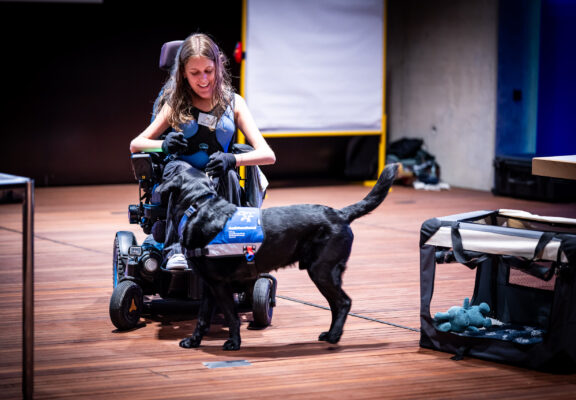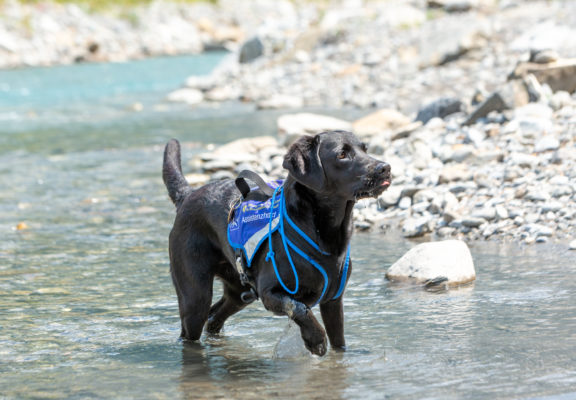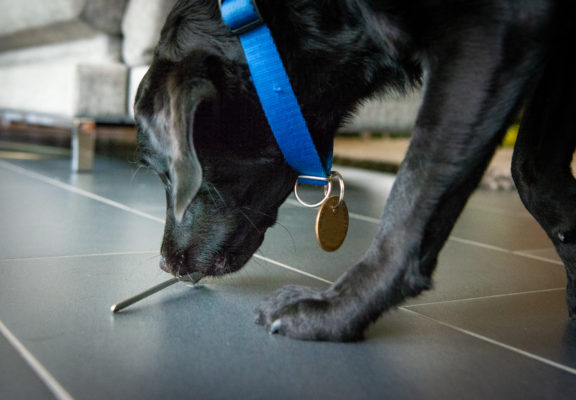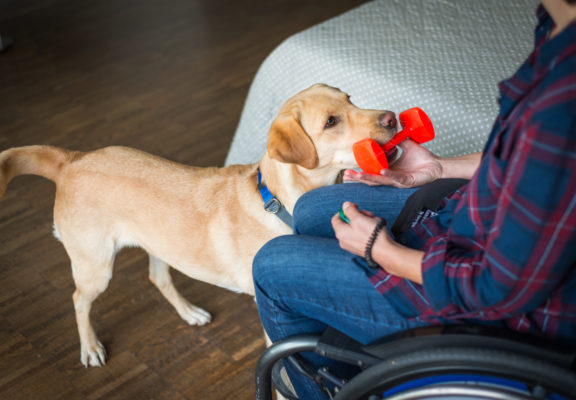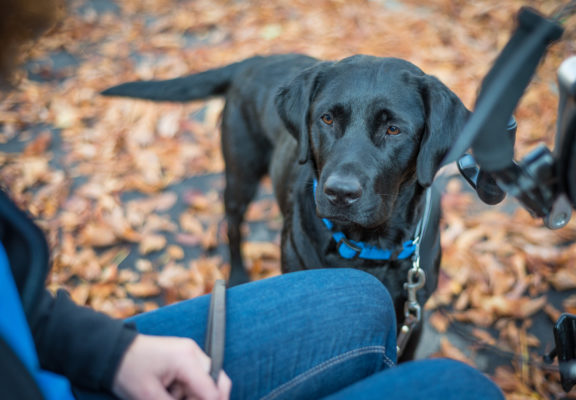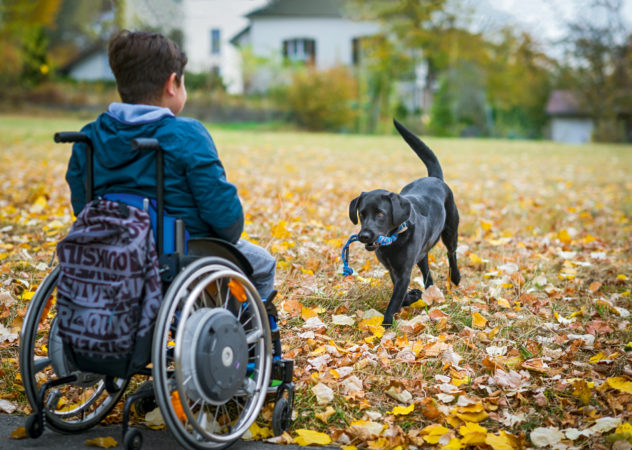
Assistance dogs help people who are dependent on a wheelchair to manage their everyday life largely independently. The pleasure they get from achieving goals together is a very important factor. Assistance dogs act as four-legged friends and helpers, making it easier for their owners to get in touch with other people; when a dog is present, the wheelchair fades from the spotlight, making it easier for the general public to approach people with a disability.
The tasks of assistance dogs
As part of their training, assistance dogs acquire the skills to support wheelchair users as they carry out their routine activities:
- They open and close doors and drawers.
- They help people to undress (e.g. taking off shoes, jackets, socks, etc.).
- They lift objects off the floor and put them in their keeper’s lap or hand.
- They fetch the telephone.
- They operate various switches (e.g. light switches, alarm buttons, etc.).
- They fill and empty the washing machine.
- In an emergency, they bark to make other people aware that an emergency has occurred.
The assistance they provide is extremely individual and every assistance dog will be specifically trained to suit each owner's particular need.
Videos with examples of how assistance dogs might be used.
